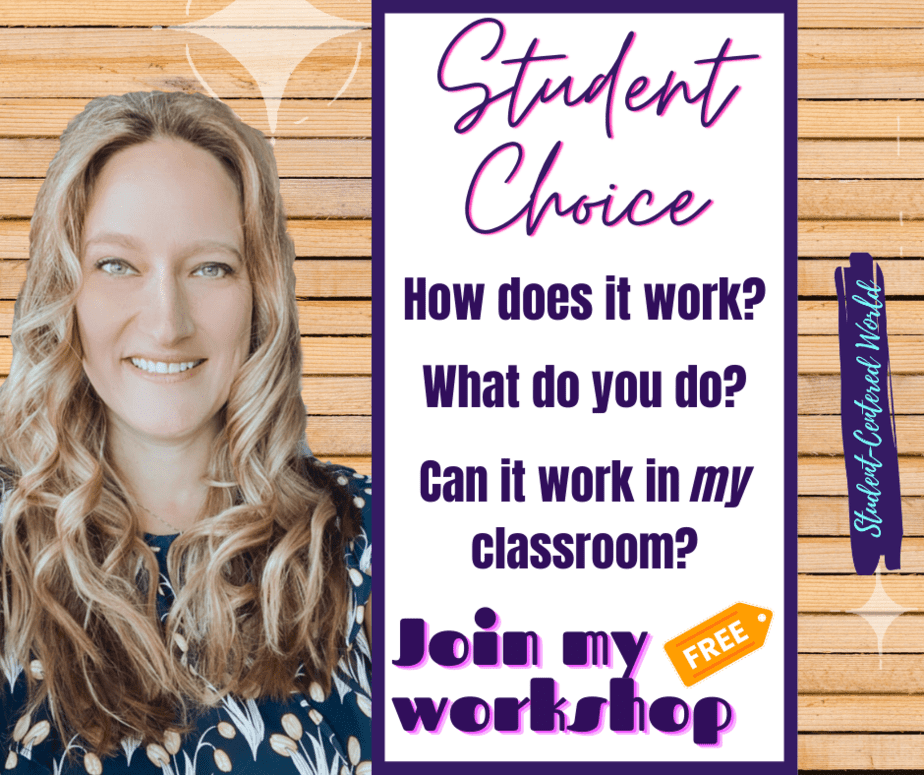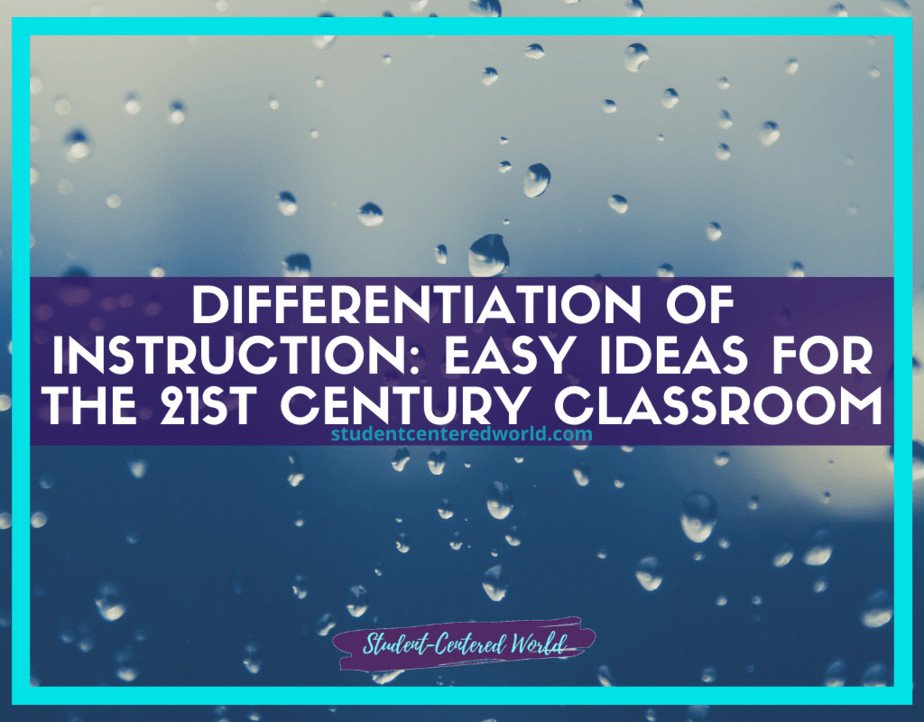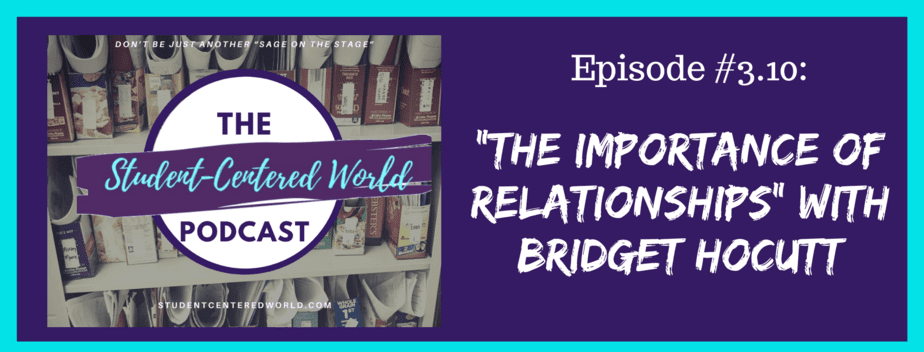The 21st Century Student Life Dynamic: Advice from Dr. Joe Lizza
Click above to listen to this podcast episode. Below is the transcript for Student-Centered World Podcast Episode 22: “Changing the Higher-Ed Dynamic with Dr. Joe Lizza“
In today’s podcast, I had the opportunity to talk to one of my dearest friends, Dr. Joe Lizza, who’s Director of Campus Activities at Rowan University. We had a phenomenal conversation about the shifts that have been made when it comes to student life, student engagement, technology challenges, family challenges, all of the issues that we are seeing across the board in the field of education.
Joe has done a fantastic job in his role working with the administrative team at Rowan University to try to come up with every possible scenario for their student life and ways to help them still succeed in both learning and making it through the day-to-day. It doesn’t matter if you are a K-12 teacher or you are in higher education, you will get a lot out of the things that Joe talks about today. A lot of the concepts that he developed or came up with or implemented are certainly things that we can all use in our classroom as well.
Welcome to the Student-Centered World podcast where we talk about all things hands-on teaching and keeping your energy and sanity in the classroom. This teacher turned consultant is making it her mission to help as many teachers as possible become the best version of themselves and keep their passion for teaching on fire. It’s her hope that we never forget why we desire to have a passion for educational progress. This is Student-Centered World, and this is Jenn Breisacher.
Jenn Breisacher: Okay, so starting out, why don’t you let everybody know who you are, what you do, and all that good stuff.
Dr. Joe Lizza: So, my name is Dr. Joe Lizza and I’m the Director of the Student Center and Campus Activities at Rowan University in New Jersey. I oversee a lot of the programmatic student life areas on campus, the activities that occur on campus, work very closely with large-scale events, and also manage our student center. So, the day-to-day operations of a space on campus for student life that builds campus community has various offices, food services, and resources for students to get engaged.
Jenn Breisacher: And how have you found that that has either changed or stayed the same or what you know, modifications have you made since all of this hoopla began?
Dr. Joe Lizza: I guess I don’t want to say if we’re fortunate or unfortunate, but we have pretty much stayed in operation since all of this started. Because we provide some essential services on campus, we were required to keep operations going. Of course, we adjusted them, we reduced them, and we put in a lot of different safety regulations and precautions. However, from around March where things started to get a little crazy we were open with limited staffing and we really focused on providing the essential tools that students needed to continue their education.
So, there were students that lived on campus throughout because they had nowhere else to go or where they came from was actually worse than where the university is located. So, in terms of cases. Additionally, we did a lot of interventions for students that needed technology. Surprisingly, enough college students do not all have laptops and printers and all that. They rely on the university. So, we had a program where the university purchased Chromebooks and we were able to distribute them in person to students.
We also provided food service for those individuals on campus and pretty much anything that had to provide any support services for students. We were kind of the home base because a lot of the other buildings and offices and staff were remote. So, we were kind of the I don’t know, like my staff, the guinea pigs or, you know, the test subjects of all this, that we kind of had to live this from the beginning.
Jenn Breisacher: And I think one of the things that really became noticeable and people in education and student life sort of knew this all along, but out in the mainstream is the fact that there is that huge disparity between students. So, you would think it’s a college campus so everybody has the technology and, I don’t want to say can afford to be there, but you just have this stereotype almost of a typical college student. Do you find that that was heavily in the forefront or did that become a priority for your institution to really focus on those students that were less fortunate?
Dr. Joe Lizza: Yeah, I think pretty early on, which I think I don’t want to say was surprising, but it’s something that everyone jumped on right away in student life. Whether that was because when the university decided to make this switch to say we’re going to go remote, we’re going to do all this Maybe there were a lot of students that actually verbalized that they had problems. But the university did really jump on to providing access.
We continued our food pantry, we team up with Philabundance to do fresh fruit and vegetable delivery, or pickup. So, we continued those services. We worked with Comcast regarding some Internet hotspots and access to that. So, of course, I don’t think it was perfect for the students that were struggling, but we did put things out there to try to help them to be able to sustain their studies and to compete with the rest of the university community.
Additionally, we really recognized that there was everything about Wi-Fi. We realized a lot of students do not have internet access at home. So, we also found that students did still come to campus to access some of those resources and that’s why we did remain open. It wasn’t a lot of students. There were also students that needed a place that was quiet, out of the way because of their home with their brothers and sisters. This is true for K-12 and higher-ed. Everyone’s in one house, parents working.
So, we also provided some private study spaces as well. In our building, maybe we had a few students throughout those couple of months, but there was consistency that they came every couple of days, and they enjoyed being in a room by themselves with quiet, with Wi-Fi, with access to printing facilities. So, I think the university really did take the right steps and I hope that the students recognize that there was definitely intentionality behind some of the initiatives.
Digital Transitions
Jenn Breisacher: Sure, and did you find that you had some of the, I don’t want to say the same type of issues, but like parallel problems with staff members also trying to make that leap and do things digitally or had the technology that they needed?
Dr. Joe Lizza: Yeah. So, I would say, since my wife is a K-12 teacher, I knew some of the challenges that they were going through. My staff as well that deal with students in person, face-to-face. That’s how we’ve always interacted. I have staff that does advising of student clubs and organizations, work with students such as in Greek life, and all these different areas that what they were used to were students coming into their office that open door and interacting. That changed several times.
Throughout this whole pandemic, things have changed so many different ways with student life, because we initially were very reactionary, and we’re like, okay, everyone needs to go away and now we weren’t prepared.
But then throughout the course of the summer, we started to get a little stronger, and develop what we were going to do for the spring, which is a lot like the K-12 world was that we figured out how do we start to host virtual programming and how do we check in with our staff, our students’ staff, even though maybe they’re not working? But they received so much support and guidance from my full-time staff that they still wanted that connection and that support and the advisement. So, they did weekly check-ins on Zoom and we decided to have to really adjust the way of what normal work was.
The university was very supportive in that they allowed the managers of each area to kind of figure out what works best for them. For the most part, like I said, most staff was initially all remote. If a department needed on-site staff, so such as public safety or housing, they figured out what was the appropriate amount of staff, and then they rotated them appropriately so that staff, that don’t have to be here every day. They might have been here one or one to two days a week.
If there were staff with any underlying health conditions, they were giving some priority, but I definitely see that there was such a shift from being shocked, like, oh, we have to not meet with people we have to work from home to okay, we’re getting through this and it’s may not be ideal, but we’re doing okay.
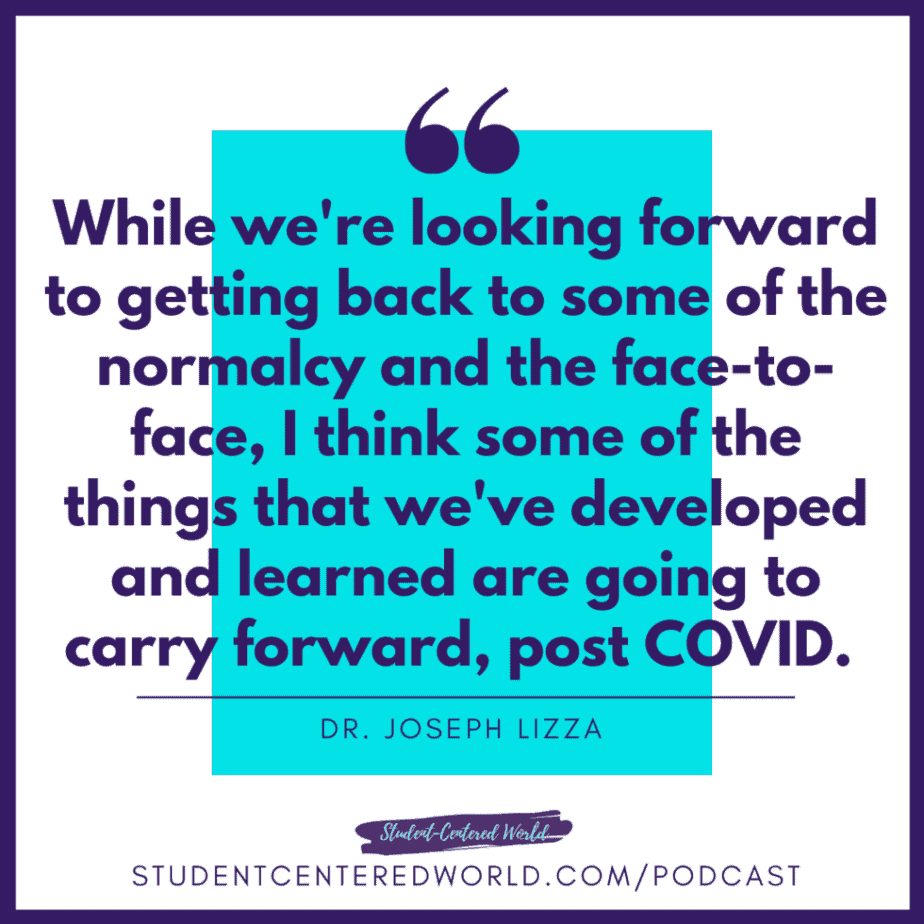
Jenn Breisacher: Yeah, and it sounds like your administration was definitely on board with that. I mean when March happened nobody knew what to do. I don’t think anybody at any level in education really had the best plan and there were certainly no best practices in place for a situation like this. A lot of places are still struggling even at this point. Right now, it’s October trying to figure out, how do we move forward? Will it go back to normal?
Did you just in your interactions with other professionals at other institutions find that their administration was not as strong or was still resistant to change or does it seem like everybody, for the most part, is trying their best to truck forward.
Dr. Joe Lizza: Yeah, I think a lot of the institutions as a whole have been promoting that change. Every school is different, and every administration and leadership is different. So, it’s hard to say that everyone had the same experience in terms of support from the senior-level administration, the President, and the Board of Trustees. However, it seems like as a field itself, so from interacting with colleagues, listservs, and Facebook groups, and all that. That the field itself of kind of higher-ed student engagement, student life, have embraced it.
I think while we’re looking forward to getting back to some of the normalcy and the face-to-face, I think some of the things that we’ve developed and learned are going to carry forward post COVID. So, especially because there are populations of students that we don’t interact with as much.
So, there are commuter students, there are graduate students that never come to campus, really. So, how do we do virtual student life programs? How do we keep students that aren’t on campus engaged, and if you’re a commuter student, sometimes the only option you had was to come to campus for a late-night event, or stay late after classes. Now, you might be able to participate virtually at the same time as others or in person.
So, we’ve developed that technology, we’ve upgraded our meeting spaces on campus. In my building, there are two rooms that are fully kind of virtual ready with cameras and ceiling microphones that can pick up talk. So, we can host a student life event in person while live-streaming it to others.
So, I think, as a field, we have really done what we can to develop sustainable practices and that’s what I’ve told my staff all along, even in March, when we were like, all the things that we normally did we can’t do. Maybe at that point, they felt like they just had no, I won’t say purpose, but they weren’t able to fulfill the responsibilities that they thought they had to do.
I told him just use that time to develop something that you can use in the future. We never have time to develop stuff. We’re always working to stay, our head above water.
So, use that time to actually work on something that, yeah, not right now. We’re not doing it right now. But work on it, develop it, and then you can launch it when we get out of the situation. A lot of them did really kind of jump on that. I think at the same time they were thinking well, we also have to serve students now and they’ve developed those other student life programs virtually and both virtual and in-person.
Shifting the Classroom
Jenn Breisacher: I think there’s a lot of silver linings that are coming out of this as much as everybody’s scrambling and feeling like they’re drowning, especially teachers that are in the classroom right now trying to manage it all. I think we are going to have a lot of good that does come out of it. Like you said commuter students in college finally can participate in events. I’ve been saying to teachers all along you’re finding new programs that maybe you never would have at the time before learning about or implementing, and now you love them, and you’re going to use them forever.
So, as hard as it is for everybody in student life and as much as the shift is we didn’t want to make I think there is a lot of good coming out of it as well. Now, I know that you are also in the classroom teaching college students as well. What is it that you are focusing on right now?
Dr. Joe Lizza: So, right now I am teaching. I’ve taught for several years focusing on leadership, some higher-ed courses focused on undergraduate students. I’m teaching an undergraduate course right now, which teaches a lot of college skills. So, for students that were maybe borderline getting admitted. So, that’s the course that I’m focusing on right now. In the spring, I’ll be teaching in the higher-ed master’s programs.
So, that will be a positive change I believe in the type, of course, that I’m teaching the students, the way they interact. Right now, I think, that teaching a course in college is similar to teaching the course virtually in a high school environment as well.
The students I’m teaching are freshmen, so they’re not too far out from a senior in high school. It’s definitely a challenging environment to keep them engaged, especially in a topic such as college skills that they don’t necessarily think they need, and they don’t actually see how that connects to their career path. Because it doesn’t in terms of like the ideas of their knowledge of their field, but it lays the foundation and base for all their success and all their future courses.
So, what I’ve tried to do is engage as much as possible. So, my course is fully remote, but it’s synchronous learning so they have to be logged in at the course meeting time and they engage with me during the class.
Some of the courses on campus are fully kind of online where you just read the module. read the module and go from there but they have to log in. So, we do get to interact, and I’ve been trying ways to kind of engage them in different manners. We do a lot with Google Docs and stuff like that.
So, I’ll ask questions during class, and then have them engage in a Google Form to get their responses. So, that keeps it private, if they don’t want everyone to know their answers, but also allows me to monitor that they’re paying attention.
Something challenging, but I also think it’s positive is that we don’t require students to be on live webcam, so we don’t require them to have the webcam on, which for those that truly can’t put the webcam on or don’t want to because of their home environment or some other reason, I think that’s fully understandable.
The challenge is those students that are actually just not engaging in the conversation. So, I try to do whatever I can to, I don’t want to say trick them but do those points that they have to check in throughout the course meeting just to make sure that they’re staying engaged.
So, I’ve definitely found it’s been difficult but luckily, you know, the university has provided a lot of resources for faculty, especially faculty who have no experience using online resources, and Zoom and WebEx, and Google. They might be the most brilliant lecturer and knowledge, you know, knowledgeable about their topic, but they’re not used to this.
So, luckily, the university has provided a range of workshops all prior to the semester starting, so that those faculty members can be more comfortable turning on Zoom and switching on their camera or sharing the screen. So, I think that’s really been positive.
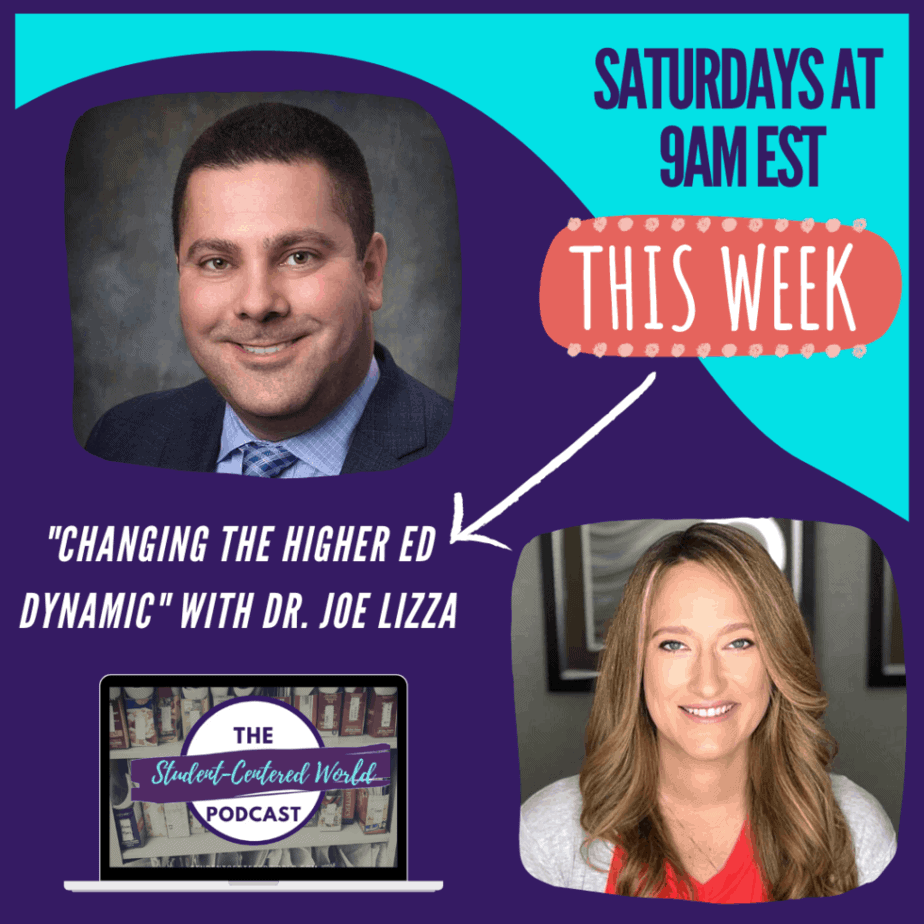
Jenn Breisacher: Sure. So is there… I’ll put you on the spot a little bit. Is there one thing that you tried for engagement that as soon as you did it, you’re like, okay, this is something I need to try to do all the time, this works?
Dr. Joe Lizza: So, I like I said, I actually didn’t come up with it and I mean, I’ve used Google Forms before, but what I did was, throughout my lecture and presentation, where I normally would say, have class interaction I actually have people chime in like what is one of your best time management strategies? Or how would you rate your time management, and everyone raises their hand, and it’s hard in a Zoom environment because everyone’s talking over each other? I can’t go around the room and say, okay, John, you can speak now. It slows down the pace.
So, I have done that I basically created a simple Google Form that I keep reusing and it just says name and the answer to the question. Then I keep up the actual running tally sheet, Excel document with all the responses and as they’re typing them in, I see them. It also has timestamps. So, because it timestamps, I know that they’re not re-watching, because I do also put my presentations on, we use Canvas right now, for students that miss class.
So, I also know if they were zoned out for 10 minutes, 15 minutes, and they go back, and like click on it. The question that I asked is not in the actual Google Form, it’s on the presentation. So, I’m not trying to catch students not paying attention but at least I could see that if all of a sudden, you know, a student responds to the question 20 minutes later, something’s up.
But I think that has been helpful to keep them engaged, or at least at the screen. I don’t know if they’re necessarily learning more but they have been very thoughtful in their responses. But I think anyone who teaches virtually knows, it just takes a lot more time to get through students answering things because you’ can’t have people just shoot their hand up, and as soon as you know, one person’s winding down in the classroom the next student knows to like, okay, I could talk now. It’s hard, you don’t have that same sense of I don’t know, it just makes it a little different.
Troubleshooting
Jenn Breisacher: Sure. And then is there anything that you tried that absolutely failed miserably immediately? You were like we’re just not going to play that game again.
Dr. Joe Lizza: So, I’ve had a lot of trouble with students with showing videos. So, I think with people’s internet capacities and abilities. So, even on the campuses, sometimes I do better at home than on campus with the internet. But a lot of my presentations and even I bring in some guest speakers from around the campus. They have videos or short clips or TED Talks or something like that and with the buffering and all the remote, it comes back. It’s horrible. Either they don’t have sound, I don’t, or it’s delayed.
So, what I’ve learned to do, once again, it’s not the best use of time but if there’s something I really want to share is that I basically will pause class, send the link for the YouTube or if I put the video somewhere else, I’ll send that in the chat, and then allow them to watch it. I know if it’s a five-minute video, I give them about five minutes and 30 seconds, and then come back as a class.
So, it allows them once again, I don’t know if they’re actually doing it. But it works better than having everyone say I can’t hear or the buffering or the screen freezes on their end and I have no idea that that’s what’s happening.
Jenn Breisacher: There’s something to consider to counter that. There is a website, it’s called Edpuzzle and you can put a video in there, and you can actually embed questions in the video if you would like. So, the video will pause, it’ll ask the questions and it could be a short answer. It could be multiple choice, it could be whatever, and you can monitor in real-time who’s actively watching it, who’s done, who’s answered all of the questions.
So, even though you send them on their way, you can actually see where everybody is in that process. So, that might help to at least know that they are engaging in the videos. So, something to consider.
Dr. Joe Lizza: Sounds good.
Jenn Breisacher: Fun little fact that you find out. Is there anything else that you want our audience to know about how this whole process is going or just words of advice?
Dr. Joe Lizza: Well, I think focusing on the staff perspective. So, being a supervisor, of a team of staff, I think it’s just important to really monitor everyone’s wellbeing. Everyone beyond the actual work that they do on campus, they have a lot of other things going on with their families with just dealing with this and everyone has different levels of understanding of what’s going on as well as just comfort being comfortable.
So, I know, there’s staff on this campus, not particularly in my department, but never having gone out since this started. The fact that they go to Target would be a huge step for them. So, there are people who have fears. So, really monitoring my staff’s wellbeing has been a priority and being flexible.
So, early on, you know, I wanted to not make it like I expected the same amount of work and the same amount of output that was prior to COVID but I also wanted to provide some structure, because some people need that structure in order to just find purpose in what they’re doing
So, I didn’t want to say you need to produce the same amount. If you’re working from home, you need to make sure that you put in your full 40-hour workweek. I understand that it’s maybe that’s not going to be possible.
We also were very flexible with put in the hours when you can. If you have kids at home if you can work from six to nine and take that time during the day to spend time with your kids or to go over schoolwork in their classes, go for it. I also say that it was it’s like this buzzword around with COOVID is the word pivot. It sometimes drives me crazy because it’s used so much. But it is true that we need to just kind of pivot every day and be flexible and able to adapt.
So, that’s really something that I’ve tried to do with my staff and know that I’m here to support them. We still have a job to do, but it’s okay, that it looks a little different. It might not be what we expect. I have a lot of staff that are those perfectionists, overachievers. They want to do the best possible thing and that might not always be possible in this environment but keep them going, keep them engaged, keep them sustained in what they’re doing so that we come out stronger in the end.
Jenn Breisacher: It sounds like you guys are doing a really good job of that. Do you have anything that’s upcoming that you’re going to be launching or unrolling or is it just kind of we’re going to go with it and ride the wave and hope this ends at some point?
Dr. Joe Lizza: So, like I said, we’ve been doing a variety of programming. In terms of the building itself, the student center has been open, supporting students’ food service. They can come in and interact with people. We also have put up outdoor tents which are also going to get heaters inside. So, for people that don’t want to eat inside, we have some designated areas that they can still eat outside so they don’t have to end up eating in their car and between classes. We’ll have heated areas for that with lights and everything like that.
In terms of student life programming, we’re really ramping up both virtual and in person. So, we’re keeping it both moving. Something that we kind of started even in the summer is that we’re doing programming and different things to engage students throughout the year and not just during your fall and spring semesters. So, that was typically what we did.
In the summer we ended up doing a bunch of virtual programming, some of it alongside our enrollment management staff because it was to engage new students that were coming in. We did programs with alumni to engage alumni but also we’re going to be doing programming during Thanksgiving. I don’t want to call it a break, but the weekend of Thanksgiving, because students are going to be here.
There are student’s states that are under quarantine, no travel list advisory for New Jersey. So, if they were to go home for Thanksgiving, they would have to quarantine for up to 14 days and that’s not manageable when classes start again on Monday.
So, students are not traveling home, or their state might just be in a worse state situation than us. So, the university is providing a special Thanksgiving dinner, not just a food court, pick up your food but something run by the Dean of Students. Then the same for winter break, recognizing, yes, a lot of people are going to go home, but students are going to start to come back earlier because they need to self-quarantine themselves.
So, while yes, most people we think would be gone for Christmas/New Year’s, winter break on college campuses runs for about a month. So, they will be coming back earlier and earlier. So, making sure there are engagement opportunities for them prior to the start of classes.
Jenn Breisacher: That’s awesome. As I said, it sounds like you guys are doing all of the right things and have some great stuff planned. I think the students that go to your school are very fortunate because of the work that you are doing. So, if our listeners want to reach out to you, ask questions, or anything, what is the best way that they can reach you?
Dr. Joe Lizza:: So, the best way would probably be through LinkedIn. So, I’m on there. I keep it very updated. You can search me just by Joe Lizza and I’ll be the one that works at Rowan University. But you could send me a message, or you could connect and I’m happy to answer any questions in regards to… Like I said do a lot on campus about staff wellbeing, supporting staff.
There’s always more that we can do because I think it changes every day, what challenges are facing the staff. But being there and I’ve always tried to be that. Openness is not only trying to help but being open in what we actually where we are in the process because I think that’s what I appreciate from my supervisors telling me, look where are we at? What are we going to be doing? Don’t try to sugarcoat it too much so that we don’t waste our time. So, I’m definitely happy to answer any questions or connect with any of you.
Jenn Breisacher: All right. That’s awesome. So, thank you so much for joining us today.
Dr. Joe Lizza: It’s my pleasure.
Stop Driving the Teacher Struggle Bus
Are you struggling with student engagement, apathy, or keeping your class on track?
💫💫 There’s hope! 💫💫
Join my free teacher workshop “Choosing Choice” and in just 60 minutes, you’ll craft a practical plan to revitalize your teaching. Discover the magic of student choice in boosting engagement, gain quick implementation ideas, and explore strategies for year-long success.
Unlike overwhelming workshops, my approach guides you in real-time, providing more classroom options, reducing stress, and giving you more personal time.
Plus, you’ll earn a 1-hour professional development certificate and have 7 days of access.
Don’t miss this chance to transform your teaching; click below to secure your spot now!

